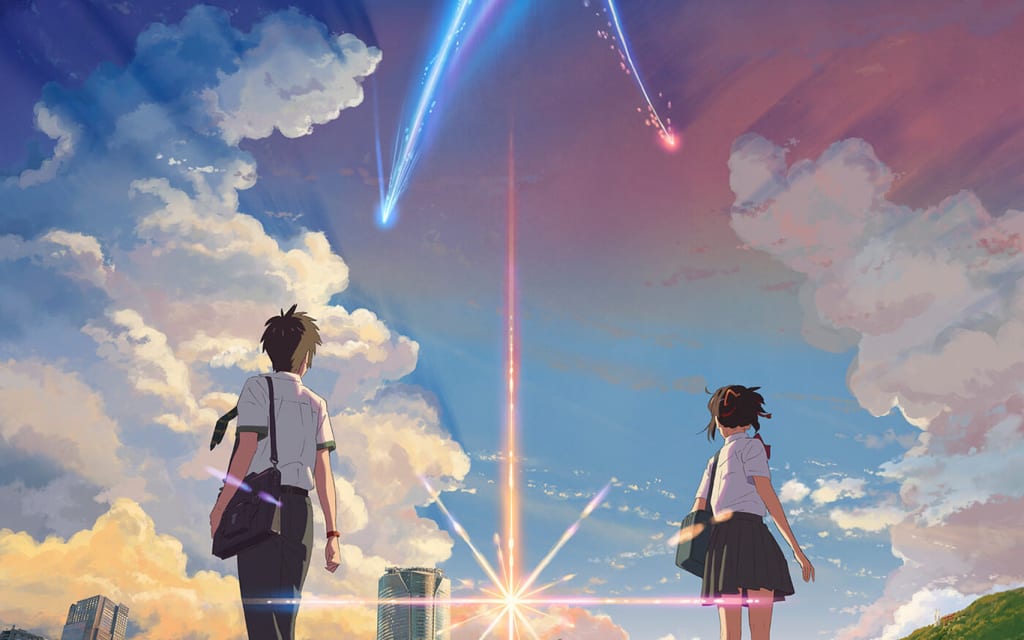
Your Name is a touching movie that left me impressed. I like anime, I used to watch it when I was a kid, but it's no big deal. This movie was highly recommended to me, but it's the typical movie that I'm going to leave for later. It took me a long time to watch it, my big mistake.
"Your Name" or "Kimi no Na wa" really moved me, it renewed in me feelings that I had not found for a long time, it changed in my head during the course of the movie, from thinking that it was a cliché, that it was something I had already seen, to thinking that I seemed to know this movie for years, from thinking that I was in the skin of the characters, that it was the story of my life that they were telling or the one I wanted to have. The movie made me feel. I don't love animated movies, yet it made me fall in love, but how did Your Name achieve this?
To begin with, the animation is excellent, needless for me to say, even the least knowledgeable on the subject knows that the animation is top notch. The movie even recreates real places in Japan And the music is perfect as well, the soundtrack is in tune and emotional, although the story at first makes you think you're watching a remake of Ranma and a half but then it shows us that it goes beyond that and surely Hollywood will make a movie based on the anime sooner or later.
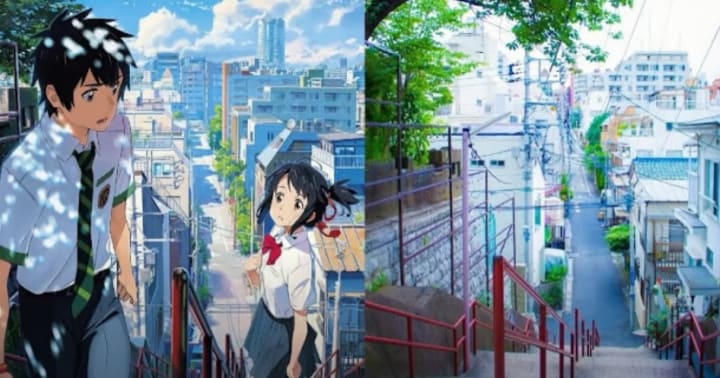
Now, as always when I see a good movie that moves me I know there is something else, something behind it that I am not seeing. First let's look at the symbolism and metaphors.
Your Name is a film whose main symbolism are the lines. The lines represent separation. The film is full of lines that separate the screen in half and in particular this shot...
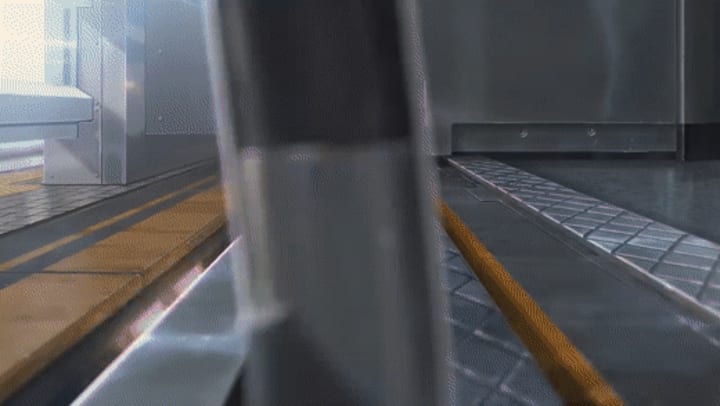
The transition he uses is of a door opening and closing, however, no one ever passes through the middle, only the door is shown, in part deepening the symbolism of separation.
Another symbolism is the image of the moon, occasionally the moon is shown eight times and always cut in half. In one shot the cable cuts the moon in half, in another we see a half moon, in another we see it in Taki's t-shirt, only when they decide to see each other at twilight do we see the full moon. In total the shot of the doors opening and closing and the moon are shown eight times, this is due to Tsukimi, a Japanese full moon festival that takes place on the 8th month of the Japanese calendar.
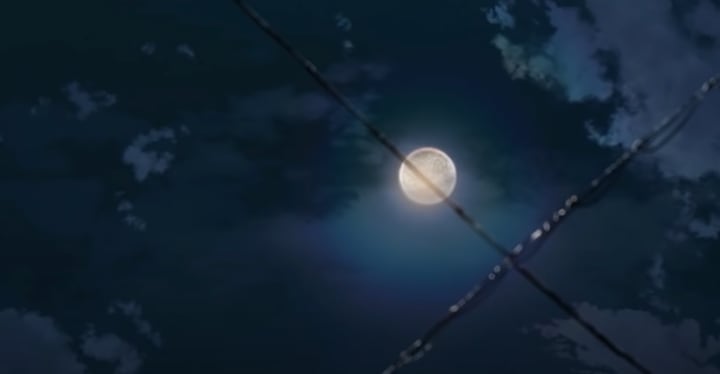
On the other hand we see many general shots that show us the environment of each one, highlighting the difference between them, the countryside and the city. These shots are always close to the ground, according to the director, so that we feel more in tune with the characters and their situations, humanizing them. We also see many shots of feet, with the same motif.
Going back to the lines, the film starts with a giant line that crosses the sky and crosses the characters, representing the connection between them, space and time. The lines are also represented by the ropes that are present throughout the film, for example, Mitsuha's red rope is a clear reference to the red thread of destiny. In East Asian mythology there is the concept of the red string of destiny that comes from Chinese and Japanese legends, according to this legend the gods tie an invisible red string around the ankles or little fingers of people who are destined to meet in certain situations or help each other, people tied by such a bond or string are destined to be lovers, regardless of time, place or circumstances, and in fact although this string can stretch or tangle it never breaks. This reference is clearest when Taki falls through Mitsuha's life seeing from its birth to its end. The rope bends, tangles, then transforms into a dragon, the comet and the umbilical cord. Running through the primordial ideas of connection whether it be between a man and a woman, a mother and her daughter, and so on.
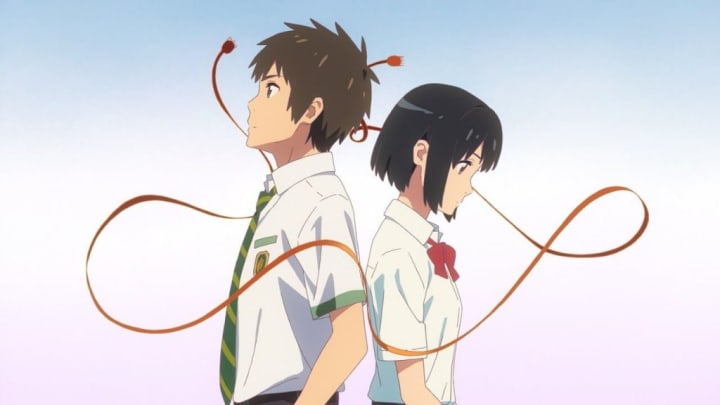
The lines encompass much more than what we have been saying, conceptually we can see them in the train lines that cross Tokyo and that cross them and the train lines themselves and that connect the country, they can be literal lines like the ones that are written to remember what Taki did on his body or lines that Taki draws while drawing the village of Mitsuha.
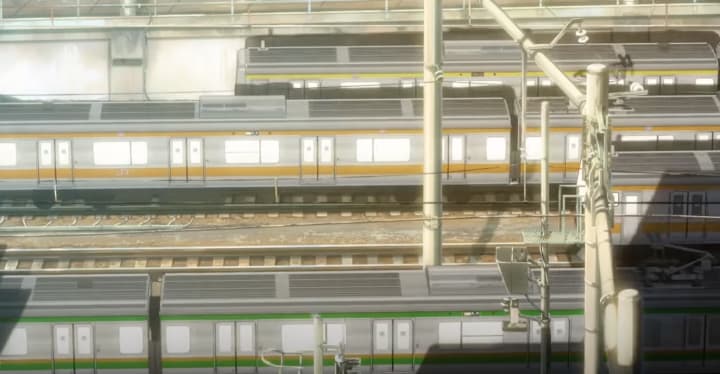
Also figuratively the lines cut the screen in half dividing the shot showing us two different locations that at the same time are connected to each other, but remember we said that the main theme of the film is separation, this is still the case. All these lines we mentioned always get cut, broken or look incomplete, despite what the mythology of the film tells us this film itself shows us how they are destined to fail. When Taki gets into Mitsuha's story we see that she experienced separation firsthand, a story of loss, separated from her mother and then her father. The shot of the severed umbilical cord is another subtext about how Mitsuha's mind is traumatized by the separation. After Mitsuha goes to see Taki three years ago and he does not recognize her, in other words, rejects her, she cuts her own hair, then in their twilight encounter Mitsuha draws a line on Taki's palm, but incomplete. The lines in every sense are the symbolic script of the film .
We are saddening a lot this film, you will think it is a very sad and dramatic film when in fact the tone of the film is always cheerful, the color palette, the animation, everything indicates it, and at a certain point the script of the film also because despite showing us separations it shows us that happiness in the end is, that everything is an unfinished circle whether in a devastated village that survives a natural accident or a love that after a long time manages to be complete. The circle is the definitive line, let's say that everything starts three years before when Mitsuha gives her rope to Taki and after that everything was disaster and separation, until finally he gives it back to her, thus completing the circle.
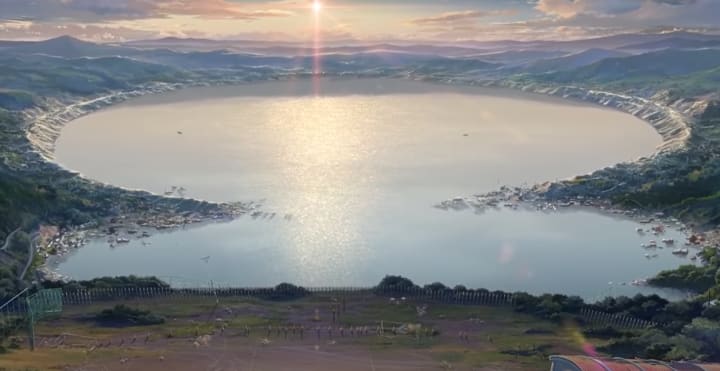
The circles are also shown in the movie, it is a big circle that surrounds Mitsuha's family temple where they can connect with those in the beyond, in other words the circle is the opposite of separation, it is connection.
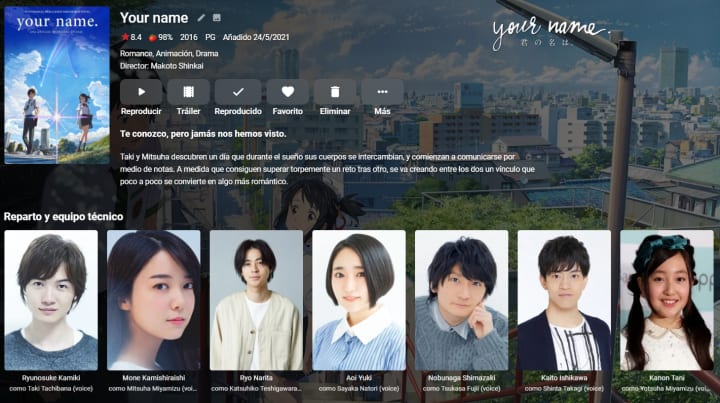
About the Creator
Emby Lat
I like movies, technology, games, art and anything that I find interesting.






Comments (1)
Ahhh how have I not seen this movie yet!! You did such a fantastic job putting this together<3 I am going to watch it ASAP